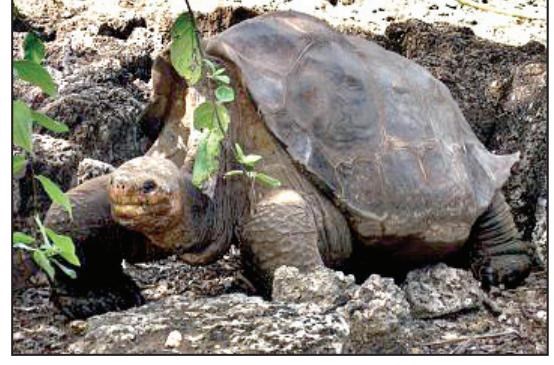A species of giant tortoises from the Galapagos Islands could be brought back from extinction despite the death earlier this year of the famed "Lonesome George," a tourist magnet and conservation icon who was the last of his kind.
Genetic material from George's species, which was largely killed off in the 1800s by pirates and whalers who hunted their meat, has survived in tortoises on the islands - and scientists think they may be able to bring the species back to life.
A study by the Galapagos National Park and Yale University found at least 17 tortoises on the Isabela island that are descendants of George's species, the Che-lonoidis abingdonii.
"The study showed that among the population of tortoises living in the Wolf volcano there were 17 individuals that have genetic traces of the tortoises that lived in the Pinta island, where Lonesome George hails from," park director Edwin Naula told Reuters.
George was believed to be around 100 years old and the last specimen of a species of giant tortoise from La Pinta, one of the smallest islands in the Galapagos archipelago - which belongs to Ecuador and lies 1,000 kilometres west of the country's Pacific coast.
Researchers believe some Pinta tortoises may have been thrown overboard by sailors and they found their way to Isabela, where they mated with local tortoises.
Naula said these tortoises are similar in shape to George and have a saddle-back carapace like his. He said the park could crossbreed the tortoises and after two or three generations they may be able to obtain Pinta purebreds.
George was found in 1972 and had become the poster boy for the islands, which attracted roughly 180,000 visitors last year. He held a Guinness World Record as the most endangered animal.
He lived in an outdoor pen on the island of Santa Cruz, and hundreds of tourists from all over the world used to visit him every month, eager to take a snapshot of the one-of-a-kind giant tortoise.
Scientists had been trying to get George to mate since the 1990s, when they introduced two female tortoises of a different subspecies into his pen. They laid eggs twice, but they were infertile.
The giant Galapagos tortoises, which can live up to 200 years, were among the species that helped Charles Darwin formulate his theory of evolution in the 19th century.
About 50,000 giant tortoises still live on the Galapagos.



